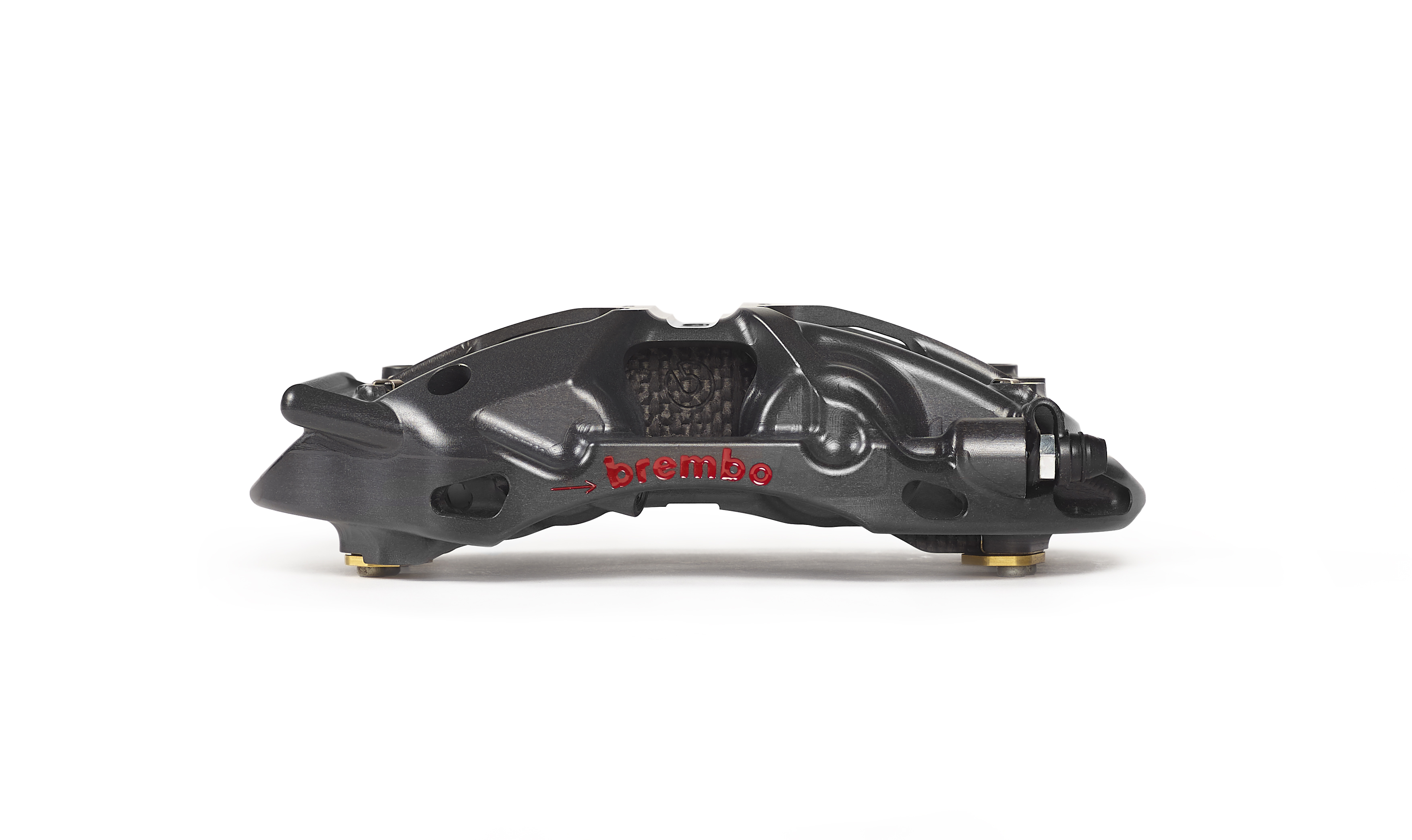THE CHOSEN SYSTEM
Taking all these factors into consideration, Brembo decided to use carbon discs and pads, although different from the ones used in Formula 1 in order to best meet the needs of a fully-electric vehicle. On the front, the discs are 24 mm thick and in the rear, they are 20 mm thick. Likewise, the front pads are 18 mm thick and the rear pads are 16 mm thick. There are 70 ventilation holes for the front (6.2 mm in diameter) and 90 for the rear (4.2 mm in diameter).

The discs operate in combination with just one front caliper model and one rear caliper unit, both with four pistons. The front calipers use 30-36 mm pistons and the rear ones use 26-28 mm pistons. Both are billeted from a single block of material and are made of oxidized aluminium alloy. The weight is almost record-breaking: Each front caliper weighs 1.2 kg (2.6 lb) and each rear caliper is 1 kg (2.2 lb).
With a view to cost containment, Brembo has produced an aluminium housing with linear bushings and a single-stage tandem master cylinder. The master cylinder feeds both the front and rear systems, imposing a fixed braking force distribution. In addition to being identical for all the teams, the system will remain the same for the entire season since no further developments can be made during the year.
